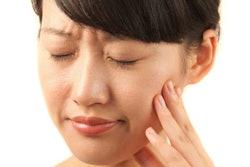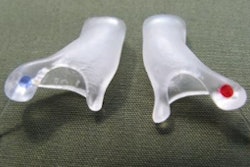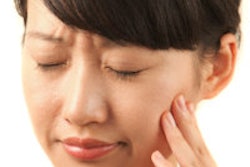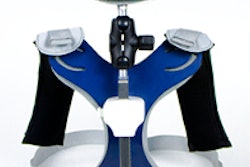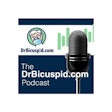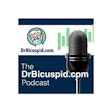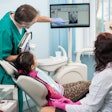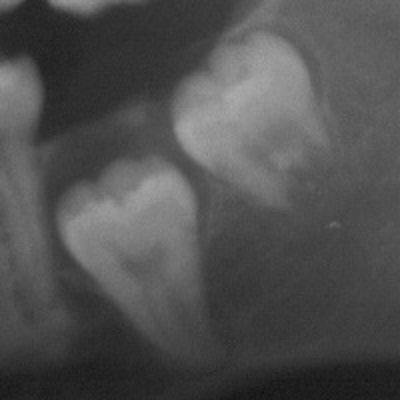
Third-molar removal is one of the most common dental surgical procedures in the U.S., representing 95% of all extractions among patients ages 16 to 21 years who have dental insurance.
Although the risks associated with third-molar removal are generally minor, such as pain and swelling, some complications may be more serious, such as injury to the temporomandibular joint (TMJ) or permanent paresthesia. The overall rate of complications from third-molar removal varies considerably, ranging from 4.6% to 21% among patients who had them extracted.
Now, a recent study in the American Journal of Public Health that examined both the retention and removal of third molars has found higher rates of paresthesia and temporomandibular joint disorder (TMD) after third-molar removal (April 2014, Vol. 104:4, pp. 728-734). However, periodontal attachment loss and incident caries at the distal sites of second molars were not affected by extraction status.
For this study, lead author Greg Huang, DMD, MSD, MPH, from the department of orthodontics at the University of Washington School of Dentistry, and colleagues investigated the aftereffects of third-molar removal or retention over a two-year period. They compared the rates of paresthesia, TMD, and caries, as well as periodontal attachment loss.
Removal pros and cons
Because many third molars are surgically removed, the costs associated with this procedure can be significant. One report estimated that more than $3 billion is spent annually in the U.S. for third-molar removal, according to a 2007 study (Am J Public Health, September 2007, Vol. 97:9, pp. 1554-1559).
Thus, some feel that monitoring asymptomatic third molars is the appropriate strategy. In fact, the American Public Health Association and the U.K.'s National Health Service now recommend against removing asymptomatic third molars.
Jay W. Friedman, DDS, MPH, a Los Angeles dental consultant, told DrBicuspid.com that a majority of patients don't need to have their third molars extracted, especially considering the risks and expense of a largely unnecessary procedure.
“When 70% of the surgeries are unnecessary, we have an obligation to inform the public and discourage the practice.”
"However small the risks of injury from removal of third molars -- most frequently permanent numbness in the lips and tongue and pain in the temporomandibular joints as documented in this study -- when extrapolated to the millions of people having the extractions, the actual number of those injured becomes quite large," Dr. Friedman noted. "When 70% of the surgeries are unnecessary, we have an obligation to inform the public and discourage the practice."
However, some have advocated early removal of third molars as beneficial to patients to prevent the risk of future pathology and minimize operative and postoperative risks. Another common argument for third-molar removal is to prevent the crowding of lower incisors, along with preventing periodontal pathology. This theory suggests that periodontal pathology begins in third molars and is more likely to proceed when these molars are retained. Additionally, if left unaddressed, the periodontal pathology may lead to negative cardiovascular, obstetric, metabolic, and renal health outcomes.
Methodology
The researchers of the current study conducted a prospective cohort study on third-molar removal and retention in the Northwest Practice-based Research Collaborative in Evidence-based Dentistry (Northwest PRECEDENT), a dental practice-based research network. Patients were recruited from May 2009 through September 2010 at the offices of participating general dentists.
A total of 517 patients completed at least one follow-up questionnaire and were followed for an average of 19.7 months (standard deviation = 5.3). Participants enrolled at least 18 months (n = 400) were invited for the final clinical examination; 218 patients (55%) underwent the final examination. About half (49%) of the participants were female, 68% were ages 16 to 18 years, and 90% were Caucasian. Most patients had private dental insurance (79%), and 65% had routine dental visits at least twice per year.
Of the participants, 30% had at least one visible third molar (partially or fully erupted). Some 6% had dental caries at the distal surface of the second molars, and 63 participants had dental caries on third molars (8% of all participants, or 26% of the participants with visible third molars).
Of the 517 participants with follow-up data, 720 third molars were extracted from 201 (39%) participants. They were extracted on average 7.7 months after study entry.
Results
The primary outcomes were TMJ signs and symptoms, paresthesia, caries, and attachment loss. The main self-reported outcomes were TMJ signs and symptoms (jaw clicking and popping, pain on wide opening, and pain in temples, jaw joint, or jaw muscles) and paresthesia of the lower lip, tongue, or both.
Patients were considered to have TMD if they reported pain on wide opening or pain in the temple, jaw joint, or jaw muscles. Of the participants, 27% reported clicking or popping in their TMJ, 13% had jaw pain on wide opening, and 17% had pain in their temples, jaw joint, or jaw muscles.
The main clinical outcomes were incident dental caries and change in attachment loss.
Patients who had at least one third molar extracted during follow-up were more likely to have pain or discomfort around third molars and periodontal pockets of 4 mm or more at the distal of second molars.
Among the 517 participants with follow-up data, 316 (61%) retained all existing molars during follow-up. Among the 218 participants who returned for the final examination, a general trend toward continued eruption of the third molars was evident. The more advanced the eruption status was at baseline, the more likely those teeth were to reach full eruption in the subsequent two-year period. At final clinical examination, 26% of the retained third molars were partially or fully erupted.
During follow-up, the incidence of self-reported TMJ clicking or popping was not significantly different between participants who did (11.7 per 100 person years) and did not (15.4 per 100 person years) undergo third-molar removal.
Complications
The rate of TMJ symptoms reported by patients who had undergone third-molar removal was much higher than expected (> 30% for either joint pain or muscular pain), the researchers found. The relative risk for TMD (3.8) was also quite high -- more than double that reported in prior retrospective studies.
Paresthesia has been reported to occur in about 1% to 5% of patients undergoing third-molar removal. The rate of paresthesia for patients in this study (about 6%) is not far from the upper bounds of past reports, the researchers noted.
At baseline, 48 participants had one or more teeth diagnosed by the general dentist with pericoronitis (6% of all participants, or 20% of the participants with visible third molars). At the final clinical examination, nine participants had one or more teeth diagnosed with pericoronitis (4% of all participants, or 15% of the participants with visible third molars).
The low occurrence of repeated diagnosis of pericoronitis at baseline and follow-up might suggest that spontaneous resolution is common. However, another possibility is that teeth with pericoronitis might be preferentially removed, thus masking a higher rate of recurrence. This study's results are consistent with this theory, the researchers said.
The incidence of caries on the distal surfaces of second molars was extremely low, whether third molars were removed or retained, they found. Only 6% of the patients showed evidence of caries at distal of second molars at enrollment.
Conclusion
Some third molars should be removed because of insufficient space, poor eruption paths, recurrent pericoronitis, periodontal disease, or other pathology, the study authors concluded. However, it also seems likely that in some individuals, third molars might have sufficient space and exist for a lifetime as healthy, functional teeth, they wrote.
"Our charge, as dentists, is to thoroughly assess a patient's unique circumstances, to educate our patients on their condition, to utilize the existing evidence, and to provide our best advice and care for the management of their particular oral condition," the researchers wrote. "Third-molar decisions should be no different."




